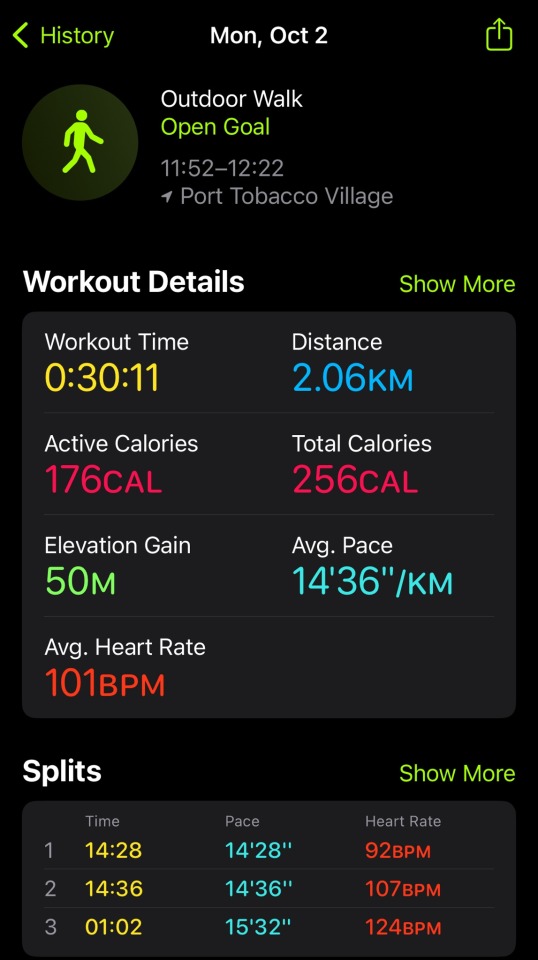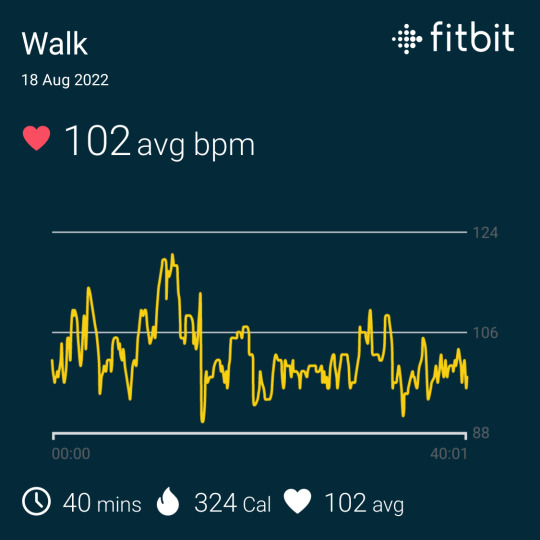#walking for weight loss
Text
A Chilly Walk
I am wiped out. I will be picking up better breakfast/lunch options. I just want to curl and sleep till spring...


7 notes
·
View notes
Text
Walk Your Way to a Healthy Heart: Exploring the Impact of Walking on Cardiovascular Health

Introduction
Cardiovascular diseases continue to be a leading cause of morbidity and mortality worldwide. Fortunately, adopting a physically active lifestyle can significantly reduce the risk of cardiovascular problems. Among various forms of exercise, walking is a simple, accessible, and low-impact activity that offers numerous benefits for cardiovascular health. In this article, we will delve into the scientific evidence supporting the positive impact of walking on cardiovascular health.
Enhances Heart Health
Regular walking serves as a powerful tool to improve heart health. It strengthens the heart muscle, enhances its pumping efficiency, and promotes better circulation. Walking increases the heart rate, leading to improved blood flow and oxygen delivery throughout the body. Over time, this can reduce the risk of developing conditions such as coronary artery disease, heart attacks, and stroke.
Lowers Blood Pressure
Hypertension, or high blood pressure, is a major risk factor for cardiovascular disease. Walking has been shown to effectively lower blood pressure levels. By engaging in regular walking sessions, individuals can reduce both systolic and diastolic blood pressure. This reduction helps to alleviate strain on the heart, minimize the workload on blood vessels, and decrease the risk of heart-related complications.
Reduces Cholesterol Levels

High cholesterol levels, specifically LDL cholesterol ("bad" cholesterol), contribute to the buildup of plaque in the arteries, leading to atherosclerosis and increasing the risk of heart disease. Walking has been found to elevate HDL cholesterol ("good" cholesterol) and lower LDL cholesterol, thus promoting a healthier lipid profile. By incorporating walking into a daily routine, individuals can positively impact their cholesterol levels and reduce the risk of cardiovascular problems.
Aids in Weight Management
Obesity and excess body weight are known risk factors for cardiovascular disease. Walking can play a crucial role in weight management and maintenance. It helps burn calories, improves metabolism, and contributes to overall energy balance. By incorporating regular walking into a balanced lifestyle, individuals can achieve weight loss or maintain a healthy weight, reducing the strain on the cardiovascular system.
Enhances Blood Sugar Control
Maintaining optimal blood sugar levels is vital for cardiovascular health, especially for individuals with diabetes or prediabetes. Walking after meals has been shown to improve glucose control and insulin sensitivity. It aids in the efficient uptake of glucose by muscles, lowering blood sugar levels and reducing the risk of complications associated with diabetes.
Improves Mental Well-being
In addition to its physical benefits, walking also positively impacts mental well-being, which indirectly contributes to cardiovascular health. Walking releases endorphins, known as "feel-good" hormones, reducing stress, anxiety, and depression. These psychological benefits of walking can help lower blood pressure and reduce the risk of stress-related cardiovascular problems.
Improves Vascular Function

Walking has a positive impact on vascular health by promoting vasodilation and improving the function of blood vessels. Regular walking helps to maintain the flexibility and elasticity of arteries, reducing the risk of arterial stiffness and hypertension. Improved vascular function facilitates better blood flow and nutrient delivery to organs and tissues, contributing to overall cardiovascular health.
Enhances Cardiorespiratory Fitness
Cardiorespiratory fitness, which refers to the ability of the heart, lungs, and muscles to work efficiently during physical activity, is a key indicator of cardiovascular health. Walking regularly improves aerobic capacity, increasing the efficiency of the cardiovascular system. As a result, the heart can pump more blood with less effort, and the body becomes more efficient at utilizing oxygen. This improvement in cardiorespiratory fitness reduces the risk of cardiovascular diseases and improves overall endurance.
Reduces Inflammation
Chronic inflammation plays a significant role in the development and progression of cardiovascular diseases. Studies have shown that regular physical activity, including walking, can reduce inflammation markers in the body. Walking helps to modulate the production of inflammatory molecules, promoting a healthier inflammatory response and reducing the risk of atherosclerosis and heart disease.
Manages Stress Levels
Stress has been linked to an increased risk of cardiovascular problems. Walking serves as a natural stress-reliever, promoting relaxation and improving mental well-being. Engaging in regular walks can help reduce cortisol levels (the stress hormone) and promote a sense of calm. By managing stress levels, walking indirectly supports cardiovascular health and reduces the risk of stress-related conditions.
Increases Longevity

Walking has been associated with increased longevity and a reduced risk of premature death from cardiovascular causes. Engaging in moderate-intensity walking for at least 150 minutes per week has been found to have significant health benefits. By adding years to your life, walking contributes to a higher quality of life and allows for more active and fulfilling years with a healthy heart.
Enhances Sleep Quality
Good sleep is essential for overall health, including cardiovascular health. Walking has been shown to improve sleep quality, helping individuals achieve deeper and more restorative sleep. Regular physical activity, such as walking, can regulate sleep patterns, reduce insomnia symptoms, and enhance sleep duration. By promoting better sleep, walking indirectly supports cardiovascular health by allowing the body to rest and recover effectively.
Boosts Immune Function
A strong immune system is crucial for protecting the body against infections and diseases, including those that can affect the cardiovascular system. Walking has been linked to improved immune function, reducing the risk of respiratory infections, inflammation, and other immune-related disorders. By enhancing immune function, walking contributes to overall cardiovascular health and lowers the chances of developing related complications.
Encourages Social Engagement
Walking can be a social activity, providing an opportunity to engage with friends, family, or walking groups. Social connections have a positive impact on mental health and well-being, reducing stress levels and enhancing overall happiness. Walking with others not only makes the activity more enjoyable but also provides a support network for maintaining a regular exercise routine. The social aspect of walking can contribute to better cardiovascular health through improved emotional and mental well-being.
Sustainable and Cost-Effective
One of the remarkable advantages of walking is its sustainability and cost-effectiveness. Walking requires no special equipment or gym membership fees, making it accessible to almost everyone. It can be incorporated into daily routines, such as walking to work, taking the stairs instead of the elevator, or going for a stroll during lunch breaks. The simplicity and affordability of walking make it a long-term exercise solution for maintaining cardiovascular health without financial or logistical barriers.
Customizability and Adaptability

Walking offers great flexibility in terms of duration, intensity, and terrain. Whether you have a short window of time or a longer period available, you can adjust your walking routine accordingly. Additionally, walking can be tailored to different fitness levels, allowing individuals to start at a comfortable pace and gradually increase intensity and distance. The ability to customize and adapt walking makes it an inclusive exercise option for people of all ages, fitness levels, and physical abilities.
Low-Risk Activity
Compared to many other forms of exercise, walking carries a low risk of injury. It is a low-impact activity that puts minimal stress on joints and muscles, making it suitable for individuals with conditions such as arthritis or those recovering from injuries. The low risk of injury associated with walking allows for consistent and sustainable exercise participation, ensuring long-term cardiovascular benefits without compromising overall well-being.
Long-Term Maintenance
One of the key challenges in maintaining an exercise routine is sustainability. Many high-intensity workouts or fitness trends may lead to burnout or difficulty in sustaining over time. However, walking can be incorporated into daily life as a lifelong habit. It doesn't require a significant time commitment or specialized equipment, making it easier to integrate into busy schedules. The ability to sustain a walking routine in the long term ensures continued cardiovascular benefits and overall well-being.
Positive Impact on Other Health Parameters
In addition to its direct benefits on cardiovascular health, walking positively impacts various other health parameters. It can help improve bone density, reduce the risk of osteoporosis, enhance cognitive function and memory, manage stress-related disorders, and promote overall physical fitness. By engaging in regular walking, individuals can experience a holistic improvement in their health and well-being.
Motivational and Goal-Oriented
Walking provides an excellent opportunity for setting and achieving goals. Whether it's aiming for a certain number of steps per day, increasing walking speed, or completing a specific distance, setting goals can help maintain motivation and track progress. Achieving these milestones not only boosts self-confidence but also reinforces the habit of walking for cardiovascular health.
Integration with Technology

Walking can be enhanced and made more engaging through the integration of technology. Fitness trackers, smartwatches, and smartphone apps can track your steps, distance walked, calories burned, and even heart rate during walking sessions. This data can provide valuable insights into your progress, motivate you to reach your goals, and help you monitor your cardiovascular health over time. The use of technology can make walking a more interactive and enjoyable experience.
Accessibility and Inclusivity
Walking is a highly accessible form of exercise that can be performed by individuals of all ages and fitness levels. It does not require special skills or expensive equipment, and it can be done almost anywhere – in parks, neighborhoods, or even indoors on a treadmill. This accessibility makes walking a viable option for people with varying levels of physical fitness or those with mobility limitations. It can be modified to suit individual needs, making it an inclusive exercise choice for a wide range of individuals.
Environmental Benefits
Walking is not only beneficial for personal health but also for the environment. Choosing to walk instead of relying on motorized transportation reduces carbon emissions, lowers air pollution levels, and contributes to a more sustainable and eco-friendly lifestyle. By incorporating walking into your daily routine, you can make a positive impact on both your cardiovascular health and the health of the planet.
Role in Disease Prevention
Walking plays a significant role in the prevention of various chronic diseases beyond cardiovascular conditions. Regular walking has been associated with a reduced risk of type 2 diabetes, certain types of cancer, osteoporosis, and mental health disorders. By engaging in this simple yet effective form of exercise, you can proactively protect yourself against multiple health conditions, leading to a higher quality of life and improved overall well-being.
Family and Community Bonding
Walking can be a shared activity that promotes family and community bonding. Going for walks together with family members, friends, or neighbors not only strengthens relationships but also encourages a healthy lifestyle for all involved. It provides an opportunity for meaningful conversations, sharing experiences, and supporting each other in maintaining cardiovascular health. Walking can be a social event that fosters a sense of community and collective well-being.
Improved Brain Health

Walking has been found to have positive effects on brain health, including cognitive function and mental clarity. Studies have shown that regular walking can improve memory, attention span, and overall cognitive performance. It promotes the release of endorphins, which can boost mood and reduce the risk of cognitive decline and neurodegenerative diseases such as Alzheimer's. By supporting brain health, walking contributes to overall cardiovascular health and enhances the well-being of both the body and mind.
Reduced Sedentary Behavior
Sedentary behavior, characterized by prolonged sitting or inactivity, is associated with an increased risk of cardiovascular diseases. Incorporating regular walking breaks into your day can help combat sedentary behavior and minimize its detrimental effects. Instead of sitting for long periods, taking short walks throughout the day can improve circulation, increase energy expenditure, and reduce the strain on your cardiovascular system. Walking breaks also provide an opportunity to stretch your muscles and maintain joint flexibility.
Enhanced Posture and Balance
Walking can improve posture and balance, which are essential for overall physical health. It strengthens the muscles in your back, abdomen, and legs, promoting better alignment and stability. By improving posture and balance, walking reduces the risk of falls and injuries, especially in older adults. Maintaining good posture and balance also supports a healthy cardiovascular system by allowing for efficient blood flow and reducing unnecessary stress on the heart and blood vessels.
Potential for Social and Environmental Engagement
Walking can be a means of engaging with your surroundings, community, and nature. Walking outdoors allows you to connect with your environment, appreciate natural beauty, and experience the benefits of fresh air. It can also serve as a platform for social engagement, such as joining walking clubs, participating in charity walks, or organizing walking events. Engaging in walking activities with others fosters a sense of belonging, support, and camaraderie, further enhancing the overall benefits to cardiovascular health.
Overall Quality of Life
Perhaps one of the most significant benefits of walking on cardiovascular health is its impact on overall quality of life. Regular walking can increase energy levels, improve sleep, reduce stress, and boost self-confidence. It provides a sense of accomplishment, improves mental well-being, and enhances the ability to perform daily activities with ease. The cumulative effects of these benefits result in an improved quality of life, allowing individuals to enjoy a more active, fulfilling, and heart-healthy lifestyle.
Improved Blood Lipid Profile

Walking can positively impact the lipid profile in your blood, contributing to better cardiovascular health. It has been found to increase levels of high-density lipoprotein (HDL) cholesterol, often referred to as "good" cholesterol, which helps remove low-density lipoprotein (LDL) cholesterol, or "bad" cholesterol, from the bloodstream. This effect can lead to a decrease in LDL cholesterol levels and a lower risk of plaque buildup in the arteries, reducing the chances of developing heart disease.
Better Blood Sugar Control
Walking regularly can help regulate blood sugar levels, making it beneficial for individuals with diabetes or those at risk of developing the condition. Physical activity, including walking, helps muscles absorb glucose from the bloodstream for energy, reducing the reliance on insulin. By improving insulin sensitivity, walking promotes better blood sugar control, reduces the risk of insulin resistance, and may help prevent or manage type 2 diabetes.
Weight Management
Maintaining a healthy weight is crucial for cardiovascular health, and walking can play a significant role in weight management. Walking is a low-impact aerobic exercise that can help burn calories and contribute to a calorie deficit, aiding in weight loss. Additionally, walking stimulates metabolism, promoting the efficient use of energy and the maintenance of a healthy body composition. By incorporating walking into a well-rounded fitness and nutrition plan, individuals can achieve and maintain a healthy weight, reducing the risk of cardiovascular diseases.
Prevention of Blood Clots
Sedentary behavior and prolonged periods of inactivity can increase the risk of blood clots, which can lead to serious cardiovascular complications such as deep vein thrombosis (DVT) or pulmonary embolism. Walking, particularly brisk walking, promotes blood circulation and prevents blood from pooling in the lower extremities. This continuous movement of the legs helps prevent the formation of blood clots, reducing the risk of potentially life-threatening conditions.
Long-Term Health Maintenance

Walking is a form of exercise that can be sustained and incorporated into your daily routine throughout your life. Unlike more intense or high-impact activities, walking is generally well-tolerated by individuals of all ages and fitness levels. Its long-term sustainability allows for consistent cardiovascular benefits and contributes to the maintenance of overall health as you age. By making walking a lifelong habit, you can reduce the risk of cardiovascular diseases and enjoy a higher quality of life in the long run.
Reduced Inflammation
Chronic inflammation is a risk factor for cardiovascular diseases. Regular walking has been shown to have anti-inflammatory effects, helping to reduce systemic inflammation in the body. By decreasing the levels of inflammatory markers, such as C-reactive protein (CRP) and interleukin-6 (IL-6), walking can help protect against the development and progression of cardiovascular conditions.
Lowered Blood Triglyceride Levels
Elevated levels of triglycerides in the blood are associated with an increased risk of heart disease. Walking can help lower triglyceride levels, thereby improving cardiovascular health. It achieves this by increasing the utilization of triglycerides as an energy source, enhancing lipid metabolism, and promoting the breakdown of fats in the body.
Enhanced Cardiorespiratory Fitness
Walking is a cardiovascular exercise that improves cardiorespiratory fitness. Regular walking sessions increase the efficiency of your heart and lungs, allowing them to deliver oxygen and nutrients to the muscles more effectively. This leads to improved stamina, endurance, and overall cardiovascular capacity. By enhancing cardiorespiratory fitness, walking reduces the strain on the heart and improves its ability to meet the body's demands.
Stress Reduction

High levels of stress can negatively impact cardiovascular health. Walking provides an opportunity to engage in physical activity and simultaneously reduce stress. It stimulates the production of endorphins, which are natural mood-boosting chemicals in the brain, promoting a sense of relaxation and well-being. Regular walking can help manage stress levels, lower blood pressure, and decrease the risk of stress-related heart conditions.
Prevention of Metabolic Syndrome
Metabolic syndrome is a cluster of conditions that include high blood pressure, elevated blood sugar levels, excess body fat (particularly around the waist), and abnormal cholesterol levels. It significantly increases the risk of cardiovascular diseases. Walking plays a crucial role in preventing and managing metabolic syndrome by improving insulin sensitivity, reducing blood pressure, aiding in weight loss, and regulating lipid levels.
Improved Cardiac Rehabilitation
Walking is often recommended as part of cardiac rehabilitation programs for individuals recovering from a heart attack, heart surgery, or other cardiovascular events. It helps improve physical fitness, strengthens the heart muscle, and enhances overall cardiovascular health. Walking in a supervised and structured rehabilitation setting can provide the necessary support, guidance, and monitoring to ensure a safe and effective recovery process.
Mental Health Benefits
In addition to the physical benefits, walking has significant positive effects on mental health. It can reduce symptoms of depression, anxiety, and stress, which are associated with an increased risk of cardiovascular diseases. Walking outdoors in natural environments further enhances these mental health benefits, providing a calming and rejuvenating experience for the mind and body.
Enhanced Sleep Quality
Walking has been shown to improve sleep quality, which is vital for cardiovascular health. Regular physical activity, including walking, helps regulate the sleep-wake cycle and promotes deeper, more restorative sleep. Quality sleep allows the body to repair and rejuvenate, supporting cardiovascular function and reducing the risk of conditions such as hypertension and heart disease.
Increased Energy Levels

Contrary to popular belief, engaging in regular physical activity like walking actually boosts energy levels rather than depleting them. Walking increases blood flow, oxygen delivery, and nutrient supply to the muscles, which leads to increased energy production. By incorporating walking into your daily routine, you can experience improved energy levels throughout the day, enhancing productivity and overall well-being.
Improved Immune Function
Regular moderate-intensity exercise, such as brisk walking, has been linked to improved immune function. Walking stimulates the circulation of immune cells in the body, enhances the production of antibodies, and strengthens the immune response. A robust immune system is essential for overall health, including cardiovascular health, as it helps defend against infections and reduces the risk of inflammation-related conditions.
Mental Clarity and Cognitive Function
Walking has cognitive benefits beyond its impact on mental health. It promotes mental clarity, enhances focus, and improves cognitive function. Regular walking increases blood flow to the brain, delivering oxygen and nutrients necessary for optimal brain health. It has been shown to enhance memory, attention, and overall cognitive performance, reducing the risk of cognitive decline and age-related neurodegenerative diseases.
Better Digestive Health
Walking can aid in maintaining healthy digestion and preventing gastrointestinal issues. The gentle rhythmic movements of walking stimulate the digestive system, promoting regular bowel movements and reducing the risk of constipation. Additionally, walking after a meal can aid in digestion by increasing blood flow to the digestive organs and supporting the overall digestive process.
Increased Longevity

Engaging in regular walking has been associated with increased longevity and a lower risk of premature death. Studies have shown that individuals who walk regularly tend to live longer and have a reduced risk of developing chronic diseases, including cardiovascular conditions. Walking's cumulative benefits on cardiovascular health, mental well-being, and overall physical fitness contribute to a longer and healthier life.
Financial Accessibility
Compared to many other forms of exercise or gym memberships, walking is a cost-effective option that requires little to no financial investment. All you need is a good pair of walking shoes, making it an accessible choice for individuals who may have limited financial resources or cannot afford expensive exercise equipment or memberships. Walking allows everyone to prioritize their cardiovascular health without financial barriers.
Personal Enjoyment and Well-Being
Finally, walking offers a sense of personal enjoyment and well-being. It provides an opportunity to connect with nature, enjoy solitude, or engage in social interactions, depending on personal preferences. The act of walking itself can be a source of joy, relaxation, and personal fulfillment. By embracing the pleasure of walking, you can cultivate a positive mindset and a holistic sense of well-being.
conclusion
the benefits of walking on cardiovascular health extend beyond the physical realm. Walking enhances sleep quality, boosts energy levels, improves immune function, promotes mental clarity and cognitive function, supports digestive health, increases longevity, and offers financial accessibility. Moreover, walking brings personal enjoyment and a sense of well-being. By incorporating regular walks into your lifestyle, you can experience these diverse benefits and nurture your cardiovascular health while enjoying the many positive aspects of walking. So, step outside, embrace the rhythm of walking, and unlock the full potential of this simple yet powerful exercise for your heart and overall well-being.
And for those who want good general health, press and continue reading to benefit and not regret it
#Walking#Heart health#Cardiovascular exercise#Fitness walking#Exercise benefits#Walking for health#Physical activity#Heart disease prevention#Walking motivation#Walking inspiration#Walking community#Walking challenge#Heart health tips#Walking lifestyle#Active living#Fitness journey#Health and wellness#Walking for weight loss#Walking workouts#Heart-healthy habits#Self-care through walking#Walking for mental well-being#Walking goals#Walking blog#Walking quotes
1 note
·
View note
Text
I weighed in today, a day early as I'm on an extremely early shift tomorrow. I'm pretty pleased with the results after the first week, as I've stuck to my recommended calories and tried to increase my activity level in a realistic way. Just need to keep it up.

2 notes
·
View notes
Text
#weight loss#diet#fitness#gym#health#workout#exercise#caloric deficit#belly fat#fat#walking for weight loss
1 note
·
View note
Text
Saturday morning walk in the foggy mist! 75H day 8


1 note
·
View note
Video
youtube
Tabata Workout For Weight Loss #weightloss #athome #exercise #bellyfatlo...
How to Do a Tabata Workout
The Tabata protocol is simple:
Choose an exercise. Any exercise can be used for Tabata, but some good choices include jumping jacks, burpees, mountain climbers, and high knees.
Warm up for 5-10 minutes.
Perform 20 seconds of intense exercise.
Rest for 10 seconds.
Repeat steps 3 and 4 for 8 rounds.
Cool down for 5-10 minutes.
If you are new to Tabata, start with 2-3 rounds and gradually increase the number of rounds as you get fitter. You can also shorten the rest periods to 5 seconds if you find that you are able to maintain the intensity of the exercise.
Read More in details : Tabata: The Lazy Person's Guide to Weight Loss
1) Women Weight loss Solutions
2) Exipure Weight loss Supplement
#youtube#tabata#tabata workout#tabata exercise#weight loss lose weight#belly fat#fat loss#tabata workout for weight loss#tabata workouts for weight loss#weight loss#weightloss#lose weight at home#walking for weight loss#weight loss at home#aerobic for weight loss#weight loss workout#tabata with no weight#weight loss diet#weight loss tips#lose weight#abata workout with weights#looseweight#weight loss motivation#14 days weight loss#2 weeks weight loss#weigh loss workout#hiit workouts for weight loss
1 note
·
View note
Text

The Best Time of Day to Walk for Better Health
Walking is a wonderful and accessible form of exercise that can significantly improve our health. But did you know that the time of day you choose to go for a walk can also make a difference?
#best time of day to walk#health benefits of walking#morning walks#evening walks#walking for weight loss#walking for stress relief#walking for better sleep#tips for getting started with walking
0 notes
Text
#weight loss diet#weight loss tips#lose weight fast#diet plan for weight loss#best way to lose weight#7 day diet plan for weight loss#weight loss foods#weight loss programs#best diet to lose weight#meal plan for weight loss#weight loss supplements#best weight loss program#best diet plan for weight loss#diet for weight loss for female#lose weight in 2 weeks#quick weight loss diet plan#weight loss exercise#best exercise to lose weight#walking for weight loss#workouts to lose weight#weight loss exercises at home#best workouts to lose weight#exercise for weight loss at home for female#best exercise to lose weight at home#workouts to lose weight at home#fastest weight loss exercise#how to lose weight fast#how to lose weight fast in 2 weeks#how to lose weight fast without exercise#how can i lose weight fast
0 notes
Text

4 notes
·
View notes
Text
What are the benefits of walking in barefoot and 05 scientifically proven reasons to do it?
What are the benefits of walking in barefoot and 05 scientifically proven reasons to do it?
Nowadays everyone wears shoes, slippers or flip-floppers, or crocodiles for comfort reasons but walking barefoot can be beneficiary for everyone for many health reasons, and walking barefoot gives you many health benefits.
Studies show that your barefoot directly touching the soil allows your body to absorb negative electrons through the earth which helps to stabilize daily cortisol rhythm and…

View On WordPress
#10000 steps#10000 steps in km#10000 steps in miles#average steps per day#being barefoot#brisk walking#power walking#steps per mile#walken#walking around barefoot at home#walking barefoot at home#walking barefoot in house#walking barefoot in public#walking barefoot on hard surfaces#walking barefoot on hardwood floors#walking barefoot on marble floor#walking barefoot on sand helps to correct#walking for weight loss#walking groups near me#walking in barefoot#walking on treadmill without shoes#walking tracks near me
0 notes
Text
Day off today, so I went for breakfast at McDonalds as a treat, and then agterwards, walked to the local big tesco to do some shopping. My partner and I have begun to split ready meals (like a 600 cal lasagne for instance) and bulk it out with a big portion of veg andnits working nicely, and also has the happy side effect of reducing how much i'm eating calorie-wise.
The walk around the supermarket was good, although stressful, i'm debating getting our food delivered to avoid this.

0 notes
Text

8/4/22
Look at my pace!!! So proud of myself
0 notes
Video
youtube
For some time now, researchers have been debating whether it is better to walk or run in order to lose weight more effectively. Many studies have been conducted to determine whether walking or running is the more effective exercise when it comes to weight loss.
0 notes
Video
youtube
Yoga Pilates Weight Loss Workout for Women || weight loss journey #reduc...
Both Pilates and yoga are exercises aimed at building strength and improving flexibility. Yoga and Pilates are both great for weight loss, but yoga, especially vinyasa yoga, burns more calories per hour, choosing between Pilates and yoga comes down to personal preference and what excites you most about exercise
People Also Like: Women Weight Loss Solutions
#youtube#weight loss hacks#weight loss journey#my weight loss story#weight loss tips for women#fast weight loss#weight loss supplements#walking and weight loss#walking for weight loss#losing weight#how to get rid of belly fat#secret tips to lose weight
0 notes
Text
Best purchase of April
#black fitblr#black girl fitspo#personal journey#exercise#workout#black fitness#walking for weight loss#black weight loss#mobvoi#treadmill
1 note
·
View note



